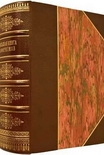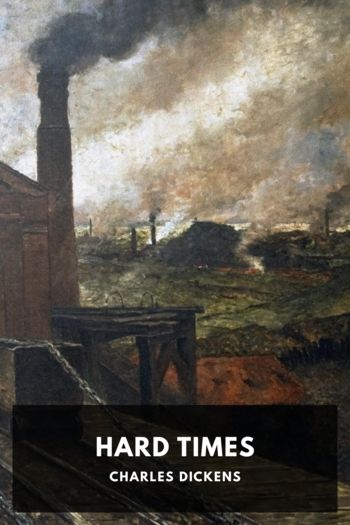Hitler's Terror Weapons Brooks, Geoffrey (bts books to read TXT) 📖

Book online «Hitler's Terror Weapons Brooks, Geoffrey (bts books to read TXT) 📖». Author Brooks, Geoffrey
On 26 April 1945 a supplementary notice widened the search to other bombs which had a 25-cm long aerial in the nose. An accompanying sketch showed a ball with small, wire-meshed covered holes at the head of the aerial. It may be recalled that during the initial experiments with the explosive in 1944, Zippermayer had had the idea that a better effect might be obtained if the powder was spread out in the form of a cloud before the explosion. A metal cylinder had been attached to the lower end of the container and hit the ground first, dispersing the powder. A quarter of a second later a small charge in the cylinder exploded and ignited the cloud. This may explain the real purpose of the ‘aerial and ball’ fitted to the nose of the bomb. The bombs were actually stored in Austria at a massive underground SS-weapons factory codenamed Quarz at Melk.
On 18 March 1945 the airfield commander of a fighter group at Münster, probably JG27 or JG28, received orders to accept delivery in Austria of the contents of thirty railway wagons consigned by the Office of Luftwaffe Supply. The orders were long and complicated and explained how the Me 109 fighter-bomber was to be converted to carry a new type of bomb. It was of 250 kg and would be slung under the bomb bay and kept in position by unusually long bolts which gave a clearance of 16 cms above the runway. A few days later another order arrived in which it was stated that the bomb had a destructive radius of 16 kms and would destroy the aircraft dropping it. Therefore the mission was to be flown only by unmarried volunteers.
Next came telephone orders for the airfield commander to collect two heavy tractor trucks at Linz and proceed to Amstetten railway goods yard. On this occasion he was advised that the new bomb would be suspended from a parachute when dropped, thus allowing the pilot a chance of escape. An altitude of 7000 metres was allowed.
The airfield commander’s ADC, a Luftwaffe Hauptmann, was sent to Amstetten railway yard and found a train of thirty sealed wagons each bearing the words “Caution. New Explosive Type!” painted on the panelling in large white characters. A Waffen-SS Hauptsturmführer in charge of the security detachment refused to release the contents of the wagons to him, citing a Führerbefehl which required the release order to bear Hitler’s personal signature. The Luftwaffe ADC had no document of this nature and the train remained at Amstetten until the arrival of the Americans.
The Waffen-SS and Americans Meet Up at Melk
On 12 April 1945 Grossadmiral Dönitz had spent 24 hours in Berne, Switzerland, and then returned to Berlin where he spoke to Hitler. 120 In mid-April the Soviet Army had dug in at St Pöllen, only 3 kms from Merkersdorf airfield which served Melk, from where they regularly broadcast over loudspeakers in German warning of the “the greatest treachery in world history” and inviting German troops, in alluring terms describing the unsurpassable treatment they would receive, to “come over and surrender”.
Melk was being defended by the 6th SS Panzer Army with fifteen Jagdtiger tanks.
When Amstetten fell on 8 May 1945 citizens recall that the Waffen-SS were waiting quite unconcernedly in the market square to meet the American forces when they arrived. During the day when there was a Russian air raid American and SS troops sought shelter together. Later the two groups collaborated. The thirty railroad cars were taken westwards across the Enns demarcation line, while a mixed group proceeded to Melk to arrange the ceasefire. The same day the Russians moved forward and encountered American troops near Melk, where a brief exchange of fire ensued before the Americans withdrew. The US forces had examined the contents of the thirty goods trucks and satisfied themselves that the bombs were not primed with the catalyst, which was required by standing orders to be added to the bomb by the SS immediately before the fuse was set prior to take-off.
In April 1945 Otto Skorzeny’s special Waffen-SS intelligence unit was ordered to provide the escort for the transport of 540 crates of documents from the Kaiser Wilhelm Institute in Berlin to the Austrian frontier. All Germany’s atomic and biochemical weapons projects were included in these archives. Eventually, on 21 April 1945, the convoy reached Stechowitz, 30 miles from Prague. A rendezvous was made with the commanding general of the SS Weapons Engineering School, the crates were separated into lots and, together with other material, were interred, the entrances being dynamited. In American custody, the SS-General described how he and another SS-officer were the only survivors after concentration camp inmates and then their SS-guards had been murdered by a regular Wehrmacht execution squad. During his own interrogation the general “came clean” and spoke about a pressure bomb based on firedamp which “was absolutely devastating for everything”. The SS destroyed the catalyst and formula shortly before the Americans arrived.
Did Goering “save civilization” by refusing Hitler’s orders to deploy these bombs? Aside from doctrinal grounds, Hitler’s objection to a full nuclear blast was that it might go on to ignite the hydrogen atoms in the atmosphere. Presumably it was thought this bomb presented the same sort of threat. The orders for its use flowed down through Luftwaffe channels. The SS





Comments (0)